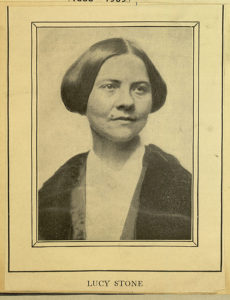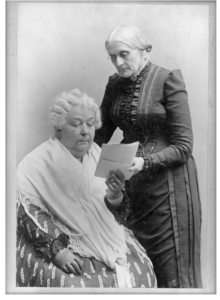Coming up with a great idea can be hard enough. Getting the idea adopted can be even harder. Why do some innovations change the world and others go nowhere?
The reasons are many. In Originals Adam Grant highlights one factor in the story of the American suffrage movement.
 Lucy Stone launched the women’s rights movement in 1851, inspiring thousands to join the cause for women’s right to vote, work, receive an education, and own property. Susan B. Anthony and Elizabeth Cady Stanton were among her early followers. But after years of leading together, in 1869 Anthony and Stanton split from Stone, nearly causing the collapse of the movement. What happened?
Lucy Stone launched the women’s rights movement in 1851, inspiring thousands to join the cause for women’s right to vote, work, receive an education, and own property. Susan B. Anthony and Elizabeth Cady Stanton were among her early followers. But after years of leading together, in 1869 Anthony and Stanton split from Stone, nearly causing the collapse of the movement. What happened?
Anthony and Stanton were purists. They opposed the Fifteenth Amendment giving African Americans the right to vote because if women couldn’t vote, no other minorities should either. Stone instead built bridges to those favoring the amendment.
Stone also sought allies in an unexpected corner, in the family-values organization of the day—the Woman’s Christian Temperance Union (WCTU). The WCTU was conservative, largely made up of religious middle- and upper-class women who were unlikely to see Stone and her movement as upholding traditional values. Yet Stone forged an alliance by suggesting that the WTCU would have a hard time changing liquor laws if women couldn’t vote. The more radical-sounding “women’s right to vote” was reframed more moderately as a “home protection ballot.”
 Anthony and Stanton were scandalized. But their differences didn’t stop there. “Stone was committed to campaigning at the state level; Anthony and Stanton wanted a federal constitutional amendment. Stone involved men in her organization; Anthony and Stanton favored an exclusively female membership. Stone sought to inspire change through speaking and meetings; Anthony and Stanton were more confrontational, with Anthony voting illegally and encouraging other women to follow suit.” (121)
Anthony and Stanton were scandalized. But their differences didn’t stop there. “Stone was committed to campaigning at the state level; Anthony and Stanton wanted a federal constitutional amendment. Stone involved men in her organization; Anthony and Stanton favored an exclusively female membership. Stone sought to inspire change through speaking and meetings; Anthony and Stanton were more confrontational, with Anthony voting illegally and encouraging other women to follow suit.” (121)
The extreme radicalism of some scared away the potential sympathy of many. Though Stanton sought reconciliation in 1872, by then Stone was too wary of her unpredictable sisters in the cause. It took passing the torch to a new generation of moderate radicals before women won the right to vote in 1920.
Change the world? Yes. With creative coalitions, with tempered radicalism, by reframing the new as something old. A hundred years ago, women showed us how it’s done.
———-
Photos: Library of Congress, Rare Book and Special Collections Division, National American Woman Suffrage Association Collection (Stone); Library of Congress,

One thought on “Why Some Innovations Succeed and Others Don’t”